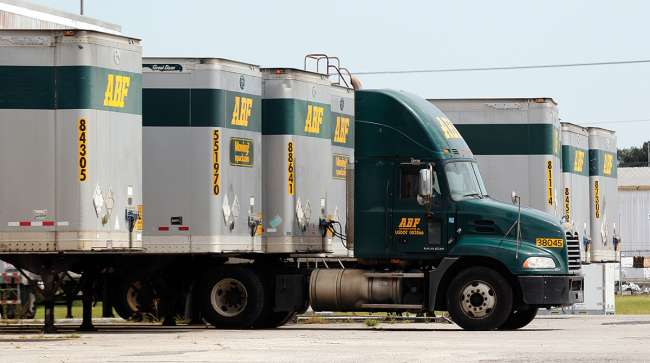Senior Reporter
Two Reports Show Trucking Economy Remains Strong

American Trucking Associations’ seasonally adjusted For-Hire Truck Tonnage Index rose 1.9% in July, a jump of 8.6% compared with the same month a year ago.
The current reading is also a turnaround from the 0.5% decrease in June, the federation announced Aug. 21. ATA revised the June decline from the originally reported 0.4%.
Year to date, tonnage increased 8%, far outpacing the annual gain of 3.8% through the first seven months of last year.
“Truck freight remained very strong in July when accounting for normal seasonality. Both the month-to-month and year-over-year gains were the largest in three months,” said Bob Costello, chief economist at ATA.
“This robust growth stems from solid manufacturing, retail sales and construction activity.”
He said the industry’s biggest challenge isn’t finding enough freight but recruiting and retaining quality drivers.
According to estimates by ATA, there is a shortage of at least 50,000 truck drivers, as the industry expands and more drivers retire and are not being replaced with younger employees.
Another key indicator of the trucking industry’s overall health, the Cass Truckload Linehaul Index, shows that from both a volume and pricing perspective the U.S. freight economy remains strong.
The index is up 10.2% in July to 138.1, its first double-digit year-over-year percentage increase to date. Its base year is 2005. The index has also been positive for 16 consecutive months.

Costello
The Truckload Linehaul Index measures market fluctuations in per-mile truckload pricing, and does not include fuel.
“We believe that this is the strongest normalized percentage level of truckload pricing achieved since deregulation,” said Donald Broughton, an analyst with Cass indexes.
Normalized means except for extreme periods of recovery following a recession, accoding to Cass, which processes more than $25 billion in annual freight payables on behalf of its clients.
The Cass Freight Index is based upon the domestic freight shipments of its clients representing a broad spectrum of industries.
Based in St. Louis, its report also said the U.S. economy, at least for now, is ignoring all of the angst out of Washington and the possibility of tariffs and trade wars.
The first seven months of 2018 have clearly signaled that, barring a negative “shock event,” 2018 will be very strong for transportation and the overall economy.
Now more than eight months into the electronic logging device mandate, the Cass Freight Index Report also looks at the impact those devices are having on the industry. The report said initially ELDs had a negative impact on the capacity and utilization of particularly small truckers, but many now are beginning to get back some of the loss in utilization they experienced, especially in the dry van and reefer marketplaces. However, the flatbed segment is struggling with productivity after the adoption of ELDs.
Economist Noel Perry, a principal with Transport Futures, said he is not surprised by the strong mid-2018 tonnage and rate numbers, but he doubts they are sustainable.
“Everybody is so used to this wonderful market we have had the last year,” Perry said. “However, I am not forecasting as yet a recession, which is what it would take to cause a disaster, a real disaster, but it is not realistic to think that these extraordinary conditions can be sustained.”
Meanwhile, a report from load board operator DAT Solutions said the late-summer spot market appears to have cooled somewhat from earlier this summer. Freight rates for each trailer type last week declined to April and May levels. DAT Solutions said that is still considered high for this time of year, but prices are trending downward, with a 2-cent drop in the national van and flatbed rates and a 1-cent decline in the national reefer rate.
ATA said trucking serves as a barometer of the U.S. economy, representing 70.2% of tonnage carried by all modes of domestic freight transportation, including manufactured and retail goods. Trucks hauled 10.77 billion tons of freight in 2017. Motor carriers collected $700.1 billion, or 79.3% of total revenue earned by all transport modes.




